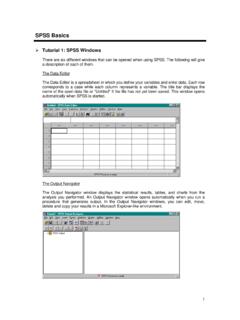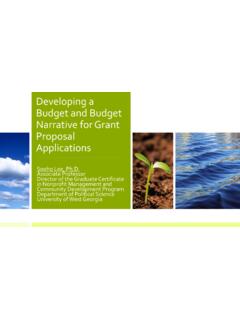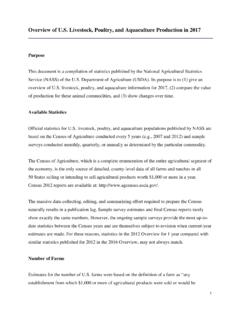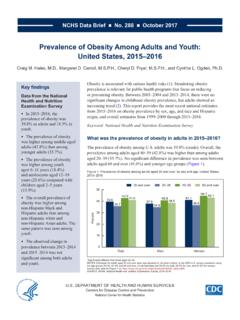Transcription of Tesla: A Successful Entrepreneurship Strategy
1 Tesla: A Successful Entrepreneurship Strategy By Khamis M. Bilbeisi and Moulare Kesse Peer Reviewed Dr. Khamis Bilbeisi, a Professor of Accounting at Clayton State University, has over 30 years experience teaching a variety courses in accounting and is involved with forensic and investigative accounting. He is a member the American College of Forensic Examiners Institute, Association of Certified Fraud Examiners, and the Georgia Society of CPAs. He is the author of numerous publications. Moulare Kesse is an Adjunct Instructor at Clayton State University. Abstract This article is about Tesla, Inc., which was founded in 2003 by a group of engineers in Silicon Valley whose objective was to create zero-emission electric cars better than gasoline automobiles and to accelerate the advent of sustainable transport by providing compelling, mass-market electric cars as soon as possible.
2 Tesla is not just an automaker. It is also a technology company with a focus on energy innovation. Its CEO is American s most well-known entrepreneur, Elton Musk. Introduction The latest view of climate change and its devastating effect on the environment has scientists, politicians, and the business community worried about the contribution of human activities to the production of greenhouse gases such as the carbon dioxide emitted by cars (Transportation s Role in Climate Change, 2016). The Intergovernmental Panel on Climate Change (IPCC), which includes more than 1,300 scientists from the United States and other countries, has forecasted a temperature rise of to 10 degrees Fahrenheit over the next century (The consequences of climate change, 2016).
3 Furthermore, the spectacular increase in the production of industrial output in China, just like other industrial production centers such as Germany and the USA, has accelerated the depletion of global oil reserves (The structure of China s oil industry, 2016). The explosion of industrial output is driven by the attempt to satisfy the voracious consumption and the increasing demand for consumer goods around the world. Rapid oil depletion has increased the call for renewable and diversified sources of energy given the unsustainability of oil-dependent economic development. Hence, in 2014, a resolution by the UN General Assembly declared 2014-2024 the United Nations Decade of Sustainable Energy for All (Sustainable development, 2016). Elton Musk, CEO of Tesla, Inc.
4 (formerly Tesla Motors) believes that in the future solar and wind farms can provide electric power when the sun is not shining and when the wind is not blowing by storing electricity generated when the sun is shining or the wind is blowing in new types of batteries. He is encouraged by market readiness and public policies willingness to explore alternative sources of energy. Musk and his team claim that the owner of a small sedan being driven 15,000 miles annually will spend an average of $6,957 on gasoline (Driving cost per mile, 2014). In contrast, the owner of an electric car running the same annual mileage will spend $540 (Moloughney, 2016). In addition, an electric car s maintenance cost is 35% less than for a gasoline-powered car (Ingram, 2016).
5 It is based on this analysis that electric-powered vehicles became commercially viable. Directly competing with Tesla is the Chevrolet Bolt. Other potential competing EVs are in development. Currently Tesla has the high-end market to itself. One advantage of EVs over vehicles with gasoline engines is the lack of a drive shaft that makes for a more roomy interior. South African native Musk, who studied economics and physics in college, is co-founder, CEO, and product architect of Tesla; the founder, CEO and CTO of SpaceX; co-founder and chairman of OpenAl; co-founder of Zip2; and founder of which, after merging with Confinity, took the name PayPal. (See interview with Musk at in which he discusses the need for and advantages of electric vehicles.)
6 Supply Chain Management Strategy Tesla s business model is different from that of most automobile manufacturing companies because it owns the entire supply chain from manufacturing to distribution. This Strategy is driven by the ultimate goal of lowering manufacturing costs and costs of goods sold, thereby assuring the business sustainability. Under the leadership of Musk, the company unveiled its Model S following its very first model, the Roadster. Tesla is now in the process of producing its latest models, Model X and Model 3, which, unlike its previous models, target the mass market for electric vehicles. It is worth noting that Tesla s supply chain management Strategy focuses on a long-term growth Strategy involving production, inventory management, and distribution.
7 Growth Strategy Tesla s growth Strategy is mostly driven by the anticipated high demand for Model 3. Hence, research and development costs rose to $ million from $ million a year ago (Ramsey, 2016). Following the R&D budget increase of 48% from the first quarter of 2013 to the first quarter of 2014, the company planned to grow R&D expenses for the second quarter by 30% from the first quarter (Ramsey, 2016). The focus on research and development in the company s growth Strategy involved the modification of the existing assembly line to handle the production of two different models: Model S and Model X (Crawford, 2016). In addition, its plant modification involved the development of advanced computer programs for assembly robots (Crawford, 2016). The company s growth Strategy was to increase production of the model S and to unveil its Model X in 2015 and Model 3 in 2017 .
8 This was in line with its production Strategy and initiatives. (See a documentary about Tesla at .) Production Musk has promised to dramatically increase car production, expand Tesla s charging infrastructure to accommodate increasing the number of tesla cars on the road, and conquer self-driving vehicles by 2020 (Thompson, 2016). In addition to making electric cars, Musk also wants the company to produce the energy that power his cars. (See how Tesla manufactures cars at .) Production level: The company has expanded its manufacturing tentacles into Tilburg, the Netherlands, where it has an assembly facility, and Lathrop, California, where it has a specialized production plant (About Tesla, 2016).
9 In November 2015 during the Baron Funds investor conference Musk suggested that Tesla is on the way to become larger than auto giants like General Motors, Volkswagen, and Toyota (Thompson, 2016). Charging infrastructure: With the ambition to have close to 500,000 Tesla cars on the road by 2018 (DeBord,2016), Musk aims to expand Tesla's supercharging network which currently offers electric filling stations that are capable of charging a Tesla vehicle enough to give it almost 200 miles of range in just 30 minutes (Thompson, 2016). During the Model 3 unveiling in March, Musk suggested that Tesla would double the number of its superchargers worldwide from some 3,600 to more than 7,000 by 2018 (Thompson, 2016).
10 Currently Tesla provides the only electric cars with an official range of more than 200 miles per charge.) Tesla s supercharger network gives it a competitive advantage over actual and potential competitors. Autonomous driving: Musk promises that his cars will be autonomous by 2018 (Thompson, 2016). The company rolled out its semi-autonomous autopilot system at the end of october 2016. Musk suggests a two-year timeline to achieve level 4 autonomy in Tesla s cars and also adds that, while the technology may be there, the user may not get full access to it because it is unlikely regulators will have laws in place by the time Tesla s autonomous cars are ready (Thompson, 2016). Battery production: One significant source of cost for Tesla cars is the lithium ion battery packs.















